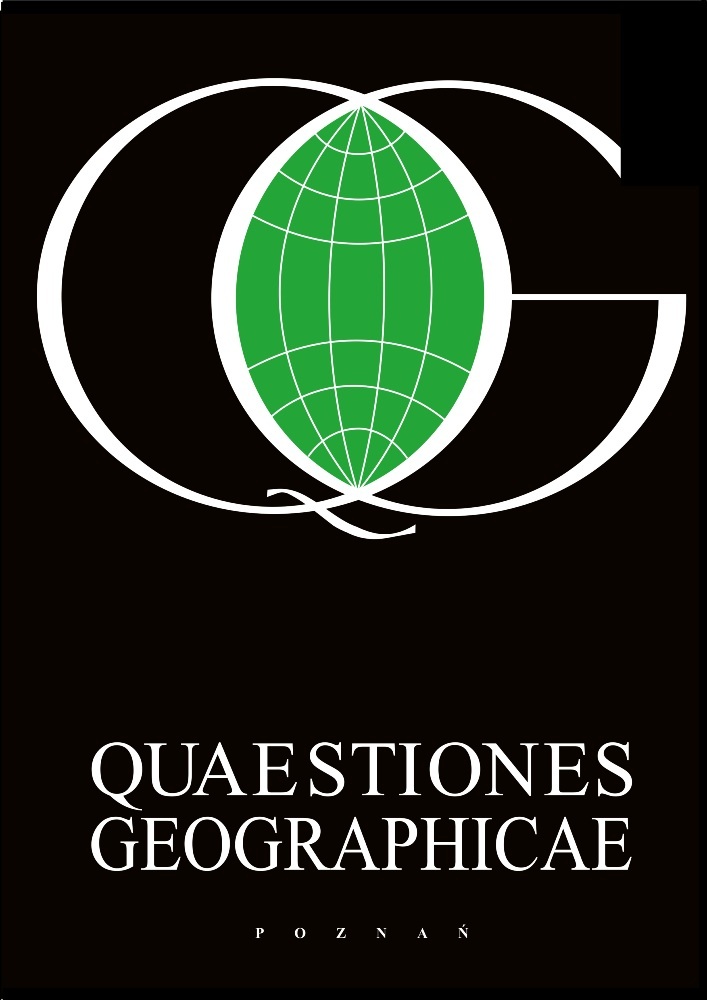Abstract
Land use is defined as a spatial distribution of individual forms of land cover patches, utilised or not utilised by humans within the framework of mutual and spatial relationships. It refers to the functional character of a given terrain, and is also identified with a socio-economic description of the land surface. Changes in land use can be interpreted as a complex and, to some extent, a random process. These assumptions serve as a point of departure in an attempt to evaluate spatial and temporal differences in land use changes in the metropolitan areas of Poland, using the entropy formula. The analysis focuses on population development as a factor that impacts upon land use change. The approach proposed here allows us to study land use dynamics in detail, with the help of cartographic visualisation.
References
Alonso W., 1964. Location and land use: Toward a general theory of land rent. Harvard University Press, Cambridge, Mass.
Batty M., 2008. Spatial interaction. In: Kemp K.K. (ed.), Encyclopedia of Geographic Information Science. Sage, Thousand Oaks, CA: 416-418 (Sage Reference Online, accessed 10 Jan. 2012).
Bourne L.S., 1978. On the complexity of urban land use change: Or, what theoretical models leave in the dust. Papers in Regional Science 41(1): 75-100.
Chojnicki Z., 1999. Podstawy metodologiczne i teoretyczne geografii (Methodological and theoretical foundations of geography). Bogucki Wydawnictwo Naukowe, Poznań.
Czyż T., 1995. Application of the population potential model in the structural regionalisation of Poland. Geographia Polonica 66(1): 13-31.
Johansson B., 1986. Introduction. Spatial dynamics and metropolitan change. Regional Science and Urban Economics 16(1): 1-6.
Johnston R.J., 1985. The dictionary of human geography. Wiley-Blackwell, Oxford.
Korcelli P., 2005. The urban system of Poland. Built Environment (1978): 133-142.
Korcelli P., Grochowski M., Kozubek E., Korcelli-Olejniczak E., Werner P., 2012. Development of urban-rural regions: from European to local perspective. Monografie 14. IGiPZ PAN. Warszawa: 51-57.
Kozubek E.B., 2002. Zmiany użytkowania ziemi w regionie tarnobrzeskim pod wpływem uprzemysłowienia w latach 1937-1992 w świetle interpretacji map i obrazów satelitarnych (Industrialisation- related changes in the land-use pattern in the Tarnobrzeg region over the years 1937-1992 in the light of the interpretation of maps and satellite images). Dokumentacja geograficzna, 25. IGiPZ PAN, Warszawa.
KPZK, 2011. Koncepcja Przestrzennego Zagospodarowania Kraju 2030 (Spatial Development Concept till 2030). Ministerstwo Rozwoju Regionalnego, Warszawa.
McCann P., Sheppard S., 2003. The rise, fall and rise again of industrial location theory. Regional Studies 37(6-7): 649-663.
OECD Library, 2011. Organisation for Economic Co-operation and Development. OECD Urban Policy Reviews. Paris.
Parysek J., 2005. Miasta polskie na przełomie XX i XXI wieku: rozwój i przekształcenia strukturalne (Polish cities in the late 20th and early 21st centuries: Development and structural changes). Bogucki Wydawnictwo Naukowe, Poznań.
Ratajczak W. 1999. Modelowanie sieci transportowych (Modelling of transport networks). Wydawnictwo Naukowe UAM, Poznań.
Ravetz J., Fertner C., Nielsen T., 2013. The dynamics of peri-urbanisation. In: Nilsson W.K., Pauleit S., Bell S., Aalbers C., Sick Nielsen T.A. (eds), Peri-urban futures: Scenarios and models for land use change in Europe. Springer, Berlin-Heidelberg: 13-44.
Snickars F., 1985. Beyond comparative analyses of metropolitan dynamics. Scandinavian Housing and Planning Research 2(3-4): 245-251.
Stewart J.Q., 1948. Empirical mathematical rules concerning the distribution and equilibrium of population. Geographical Review 37: 461-486.
Warntz W., 1957. Geography of prices and spatial interaction. Papers in Regional Science 3(1): 118-129.
Werner P., 2003. Geograficzne uwarunkowania rozwoju infrastruktury społeczeństwa informacyjnego w Polsce (Geographical determinants of the development of information society in Poland). Uniwersytet Warszawski, Wydz. Geografii i Studiów Regionalnych, Warszawa.
Wędrowska E., 2012. Miary entropii i dywergencji w analizie struktur (Measures of entropy and divergence in an analysis of structures). Wydawnictwo UWM, Olsztyn.
Wilson A.G., 1970. Entropy in urban and regional modelling. Pion, London.
Wilson A.G., 2000. Complex spatial systems: The modelling foundations of urban and regional analysis. Pearson Education, New York.
License
© Faculty of Geographical and Geological Sciences, Adam Mickiewicz University.
This work is licensed under the Creative Commons Attribution-NonCommercial-NoDerivatives 3.0 License.
